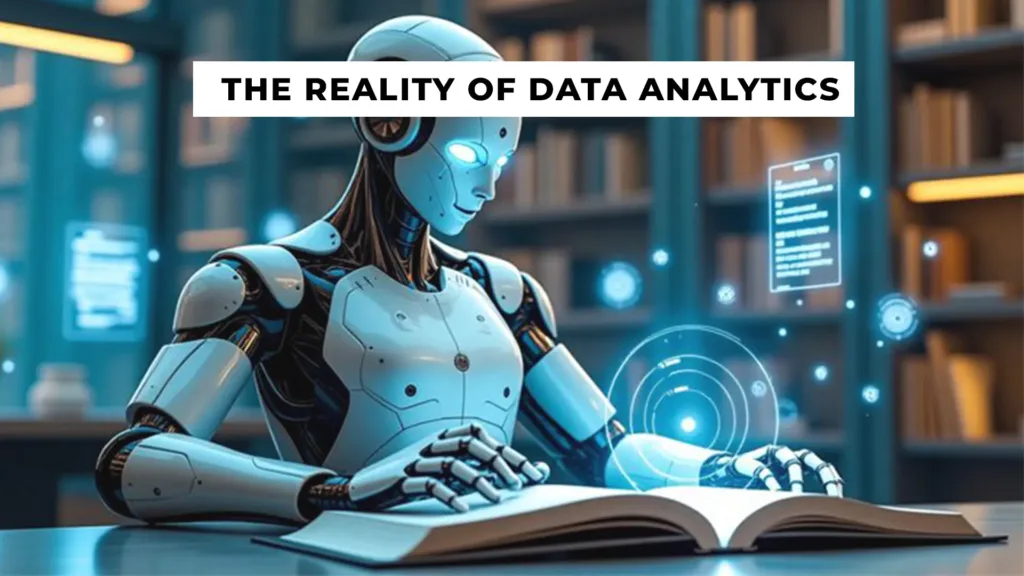In an information-overloaded world, organizations are using data analytics not for prediction or automation but for clarity, guidance, and decision support. Though most people equate data science with sophisticated algorithms, the real essence of business intelligence continues to reside in clean, structured, and analyzed data.
This blog goes deep into the realm of traditional data analytics, the kind done daily in offices, reports, and dashboards globally. No buzz. Pure data work only.
The Analytics Journey: End-to-End
In essence, data analytics is a structured and repeatable process. Properly executed, it helps turn dispersed data into understandable, actionable stories.
1. Data Collection
It all begins with data. It might reside in Excel spreadsheets, SQL databases, server logs, website forms, or cloud tools. Collecting it is step one and usually the most underappreciated.
Downloading monthly reports
Querying structured tables
Extracting from web APIs or CSVs
2. Data Cleaning
Real-world data is rarely prepared for analysis. It’s disorganized, inconsistent, and usually incomplete. Cleaning data is where analysts invest most of their time and where they create the greatest value.
Tasks include:
- Removing duplicates
- Filling or flagging missing values
- Standardizing date formats and categories
- Ensuring numerical data types are correct
- Trimming spaces, correcting typos
3. Data Structuring
Before analysis, the data needs to be reshaped:
- Splitting columns (e.g., full name → first and last)
- Creating calculated fields (e.g., profit = revenue − cost)
- Normalizing values (e.g., converting ₹ to $)
- Aggregating data by week, month, region, etc.
This step sets the groundwork for profound insights.
4. Exploratory Analysis
Now the real job starts: discovering patterns. This isn’t about predictive modeling. It’s just about keen observation.
- Which product has the highest sales?
- Where are expenses increasing over time?
- What is the order average value by region?
- How do customer demographics vary by products?
These solutions are the foundation of operating decisions.
5. Visualization & Reporting
Data is not just for analysts; data is for decision-makers. The final step is to present findings in plain language.
- Line charts for trends
- Bar charts for comparisons
- Pie charts for percentages
- Heatmaps for density
- Pivot tables for summaries of multiple levels
Applications such as Excel, Tableau, Power BI, and Matplotlib/Seaborn in Python assist in bringing static information to life.
Use Cases
Retail
- Compare sales across products, cities, or seasons
- Find underperforming items or stores
- Examine return rates and profit margins
Healthcare
- Monitor patient admission trends
- Monitor stock levels of medicines
- Compute the average treatment length by department
HR & Operations
- Monitor attendance and leave patterns
- Analyze turnover by role or team
- Track training hours against improvement in performance
Finance
- Tracking expenses on a monthly versus quarterly basis
- Budget usage by department
- Highlight large or unusual transactions
Analytical Thinking > Tools
Software and scripts are indeed important, but the real skill of a data analyst lies in asking questions:
- Is the comparison apples-to-apples?
- Are the categories grouped correctly?
- What data is missing and why?
- Can this number be relied upon?
Good analysts don’t just crunch numbers. They question them.
Core Tools
- Excel – Filtering, formulas, charts, pivot tables
- SQL – Grouping, filtering, joins, and aggregations
- Python (Pandas) – For big data handling
- Power BI / Tableau – For dynamic dashboard building
These tools are sufficient to respond to 80% of business queries, without even touching advanced statistics or automation.
Last Thoughts
Data analytics is not about seeing the future. It is about a clear insight into the present. It is about making confident decisions backed by numbers, and most importantly, about turning noise into knowledge.
If you work with data daily, never forget that “it’s the fundamentals that count, not the flash.” Ask good questions. Clean your data well. Do not underestimate the importance of the well-crafted pivot table, either.
Written by a data enthusiast who believes good insights don’t always need a model, they just need a curious mind.
